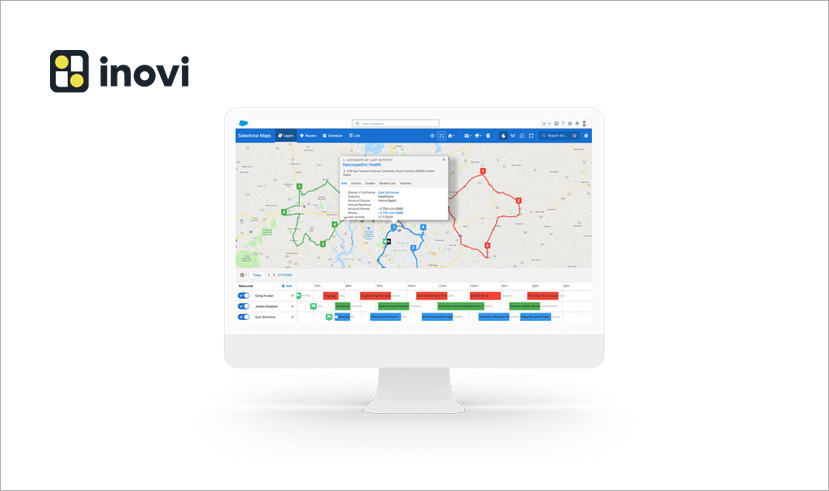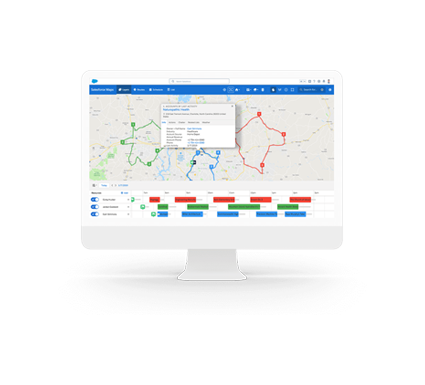How to Use Salesforce Maps
Salesforce Maps is a location-based intelligence solution that is mobile-compatible and created for sales process and territory management optimization. The software enables you to move from territory planning and design through execution by your field reps and results visualization.

Key Features of Salesforce Maps
Currently, the salesforce map carries out the following principal operations.
Salesforce sales route planning
Sales territory planning can determine the most effective sales route, ultimately providing the sellers with the fastest method to stop at every destination. Sales representatives can discover neighboring accounts along with the route to fill in any gaps and make the most of their time.
Visualization and management of sales territories
According to CRM data, the territory can be segmented by geographic area, customer revenue, new or current customers, and other factors. These divisions can then be shown using a bird’s-eye map view to help users make decisions with total ease, depending on the location.
Visualization of sales data using maps
This map-based visualization also allows you to monitor other important parameters, including revenue, kind of sales, product specifications, and rep activity.
Prioritized planning
According to Maplytics, a poorly managed schedule is one of the main obstacles to field sales reps in completing their work. However, using Salesforce platforms like Einstein® Score or Pardot® Score, one can ideally create a 7-day sales schedule based on prospect analysis and priority.
Team sharing and collaboration
A collaboration feature is a must-have for any effective sales platform. Maps provide cross-platform sharing of timetables, routes, and regions. These can be viewed and used on any desktop or smart device.
How to use salesforce maps? (Step-by-Step guide)
- First, install Salesforce Maps and grant access to sales representatives.
- Open the application, select “Maps,” and add a new layer for a specific region.
- Define the layer’s parameters. Select the information you want to be displayed when the layer is chosen.
- Plot the markers and save the layer.
- Click on markers to examine essential facts about the previously defined account.
- If necessary, you can even compare the sections using the drawing tool.
- Now, create a new route. After that, choose the accounts that will be added to it automatically, save the route, and select the calendar date you want to leave.
- Now, Sales representatives can use the markings to check in and out of their respective locations.
Is Salesforce Maps right for my business?
Pros of Salesforce Maps
- On a map-based interface, you can easily view various features of your sales data, including customers and sales revenue.
- You can more easily create balanced sales territories. This will improve the chances of all of your sales representatives meeting their targets regularly within time.
- You can easily view a wide range of information on the dashboard whenever needed, such as the number of check-ins per week, the average time spent on site, the number of chances generated, etc.
- Create improved sales routes that display not only the journey duration but also the distance between consumers at the same time.
- Your sales representatives can swiftly update and add to customer data via mobile accessibility, and they can discover additional customers nearby to fill in any gaps in the day.
- You can maintain your data consistency by directly integrating with Salesforce.
- Your sales representatives can easily update and add to customer data while on the go.
- The software has a wide range of customization options and was created for the entire sales team, not just for outside sales.
Challenges of using Salesforce Maps
- It is challenging to effectively assess and evaluate the sales pipeline inside a territory since Maps lacks the deal tracking feature.
- For unique situations like cancellations, newly added appointments, or meetings outside the sales zone, changing the sales routes is not as simple and obvious as it seems.
- Compared to other mapping applications, it does not provide as much regional and demographic information. This means that because the program concentrates on existing customer data, it doesn’t offer as much potential to identify new prospects and opportunities inside existing areas.
- Due to the mobile version’s restricted functionality, sales representatives may sometimes need to return to their workplace to accomplish certain tasks.
- Pricing is more competitive for larger companies.




